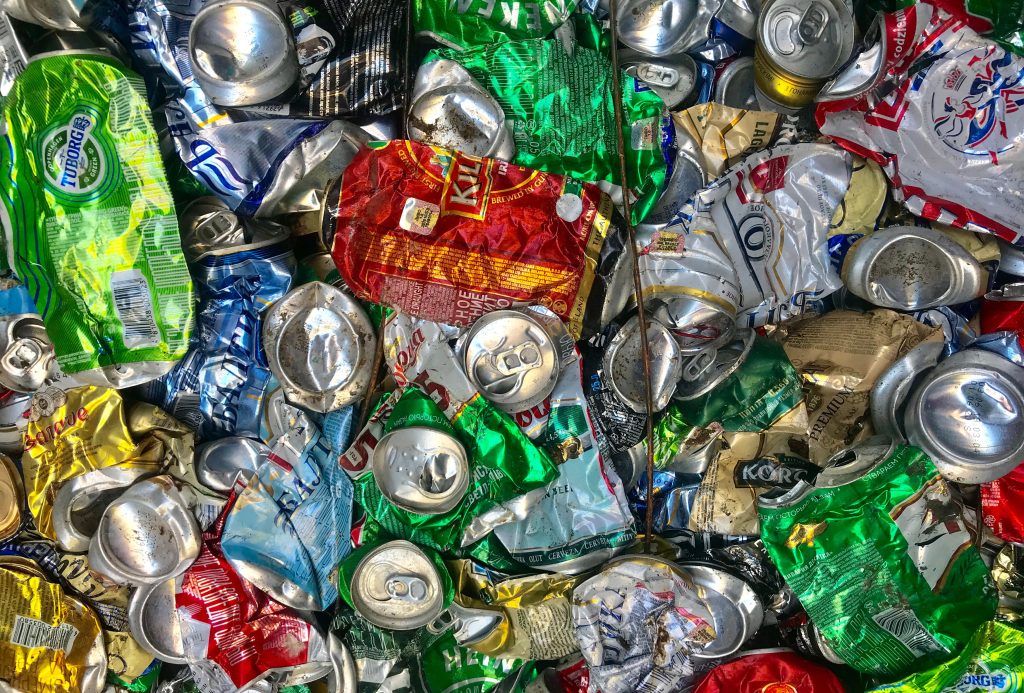Every action, like buying stuff, planning trips, or even switching on a light, **affects our planet**. What’s got scientists worried most are the greenhouse gases, such as carbon, which trap heat. As a result, global temperatures **keep rising**, and we see more **climate-related disasters**.
So what’s causing these harmful emissions? In the United States – which generated 15% of all global greenhouse gases in 2020 – transportation is the biggest contributor, with airplanes, cars, and other modes of travel contributing 28% of U.S. greenhouse gases, according to the EPA. Electricity production is a close second at 27%, while industrial emissions from burning fossil fuels and manufacturing-related chemical reactions generate 22% of U.S. emissions.
This leaves a comparatively small sliver of responsibility for our climate crisis at the doorsteps of American households – indeed, 12% of U.S. emissions come from residential and commercial buildings combined – but still, there’s a lot each of us can do in our day-to-day lives to help reduce our collective carbon footprint.
More and more U.S. companies are striving to become carbon neutral – that is, to minimize things like energy usage and travel, and then offset their remaining carbon footprint through actions that have a positive impact on the atmosphere. With the help of nonprofit We Are Neutral, for instance, Fracture became completely carbon neutral in 2015. In 2020 alone, Fracture managed to offset 573.07 tons of carbon. That’s the same environmental impact as removing 124 vehicles from the road, switching 21,771 incandescent light bulbs to LEDs, or planting 9,476 trees and letting them grow for 10 years.
But carbon neutrality isn’t strictly a business issue. Every individual has opportunities in our day-to-day lives to reduce our own carbon emissions, be it from travel, electricity consumption, and making changes to other aspects of our lives that you may not have even considered.
Want to reduce your own carbon footprint and help ensure a more sustainable future for our planet? Here’s how to get started.

First, Perform A Personal Carbon Audit
Before learning how to minimize your impact on the environment, you’l need to figure out your carbon footprint. The EPA’s free calculator provides a personalized look into your environmental impact, based on everything from electricity usage to travel. It also includes tips on making minor, but effective, changes to your lifestyle.
Every household’s carbon footprint is different; Some use more electricity than others, while some families travel more frequently. When looking for ways to minimize your impact, remember that every change counts. Those living in moderate temperatures might find switching their HVACs off at night a little easier; those working from home will find reducing their commuting costs a breeze; and those with backyards will have an easier time getting started composting.
Reevaluate Your Electricity Usage
Replacing older appliances with modern, green energy ones can make a huge difference. An energy-star refrigerator, for instance, can reduce your carbon footprint by 3,600 pounds over five years. Front-loaded washing machines have been updated to use 60% less water than a top loader, saving over 3,000 gallons of water a year, while newer toilets save 4,000 gallons of water per person each year. Newer showerheads reduce your water consumption by over five gallons per minute.
The biggest, most cost-effective way to reduce your electricity usage? Reduce your reliance on your HVAC. You can save a ton of energy just by reducing the temperature by just one degree. And leave it there; Constantly turning your HVAC on and off uses more energy every time it boots back up, rather than cycling through its normal rhythms. And, contrary to what we want to believe, it is not quicker to cool or heat a room if we drastically increase or decrease the temperatures rather than changing by a few degrees.
Whenever possible, turn on your ceiling fans and open the windows, which can cool a room by four degrees and reduce energy costs by 15%. Adjust your fans each season: clockwise for winter and counter clockwise for summer. This pushes cooler air down in the warmer months and displaces the hot air that’s risen during the cooler months.
Update Your Lighting With Energy Efficient Bulbs
To reduce energy consumption, switch out your traditional light bulbs with LED ones. They last 25 times longer and, on average, use 80% less energy. Whenever possible, open your blinds and let natural light provide a cost-effective source of light. At Fracture’s headquarters, the team was intentional about building a space with large windows that let in the bright Florida sunshine. Blinds and shades are a great way to heat — or cool — a room. Put up heat-reflecting shades in the summer, and heat-absorbing ones in the winter.

Rethink The Way You Travel
In the United States, the travel industry generated about 28% of global greenhouse gasses in 2018. If you must fly, nonstop flights are better for the environment, and longer trips are more effective than shorter ones, as 25% of all flight emissions come from take off and landing. If possible, stay longer and pack lighter.
Better yet, make it road trip and bring your camera along. Driving, preferably carpooling, generates significantly less carbon than flying does. To get the most out of your vehicles in terms of efficiency, keep your car serviced and up-to-date to reduce unnecessary emissions. For local travel, walking and biking are great ways to head outdoors, get a little exercise, and be a little more environmentally-friendly.
Eat Less Meat
The footprint left from your food encompasses more than just leftover waste. It includes the resources needed to grow the items and the carbon generated shipping the items to your grocery store. Food emissions account for 17% of household greenhouse gases; and 15% of those come from meat, dairy, and eggs. The impact from animal products is considerably higher because livestock requires more land, resources than plant-based crops – not to mention all the methane gas that comes from cows.
On average, a vegetarian’s diet produces about 50% less emissions than that of a meat-eater. Not ready to cut out hamburgers and bacon? Even participating in Meatless Mondays — avoiding meat one day or one meal a week — has the same positive environmental benefit as driving 348 fewer miles on a road trip.
Shop Locally
Shopping locally doesn’t just support neighborhood businesses; It helps the planet too, since the food doesn’t have to travel long distances to get to your dinner plate. Foods that aren’t in season locally must be shipped from around the globe, contributing significantly to the carbon imprint of that item.
Fresh food imported from other locales must also be sprayed with chemicals that extend the shelf life and are frequently air-freighted, the quickest, and most environmentally-damaging, mode of transportation. In contrast, locally-grown, in-season groceries require minimal transportation and tend to be chemical-free. Support local farmers at farmers markets or look for smaller grocery stores that partner with local farms and vendors. You’ll be doing the planet — and your body — a favor.

Minimize Overall Waste
Not all plastic is created equally. Identify what can be recycled and what materials and products can help you reduce your overall waste. Take the time to sort through your trash and recycling before throwing out: just a few minutes each week can greatly reduce your impact.
As for any biodegradable items purchased, look into the best way to dispose of them. Throwing these items directly into the trash isn’t as environmentally-friendly as you might think. Landfills are so cramped there’s no chance for the products to properly break down. As a result, they create methane as they decompose — a greenhouse gas thirty times worse for the environment than carbon.
Recycling may be second-nature to most, but what about composting? Getting started is less daunting than you might think. Over 30% of waste can be composted. If composted properly, common household waste like coffee grounds, egg shells, paper products and scraps from fruits and vegetables can decompose naturally. This also has the effect of enriching the soil and eliminating the need for chemical fertilizer.
While composting is certainly easier if you have your own backyard, it is still possible for city-dwellers or those living in apartments. Many cities offer food waste programs or have community gardens where you can grow fresh food and bring your compost back when you’re finished. Talk to sellers at your local farmers market — they might have compost piles on their farm, or want scraps for their farm animals. See if your city offers a weekly food scrap pickup. Many offer compost bins, so you don’t even need to buy your own.

Decorate Your Home With Sustainable Decor
Do a spring refresh with home decor items that leave a small impact on the planet. Opting for natural materials reduces the amount of processing, refinishing, and manufacturing needed – often the biggest source of carbon emissions. When shopping, look for items made from recycled materials and sustainable fibers for everything from couches and rugs to paint and furniture.
You can also bring nature indoors by decorating with greenery and plants that do good to the environment, help with mindfulness, and offer bright pops of color. Blend meaningful pieces like sustainably-shipped glass prints of loved ones alongside plants and flowers for a cheery combination that is also eco-friendly.
Offset Your Carbon Footprint
One of the most effective things we can do for the environment is to offset our individual carbon footprint for the year. Once you calculate your carbon impact, you can purchase carbon offsets or donate to nonprofits like We Are Neutral and Terrapass, which help businesses and individuals understand their own carbon footprint – and offset it by supporting projects that reduce emissions and greenhouse pollution all over the world.






Comments